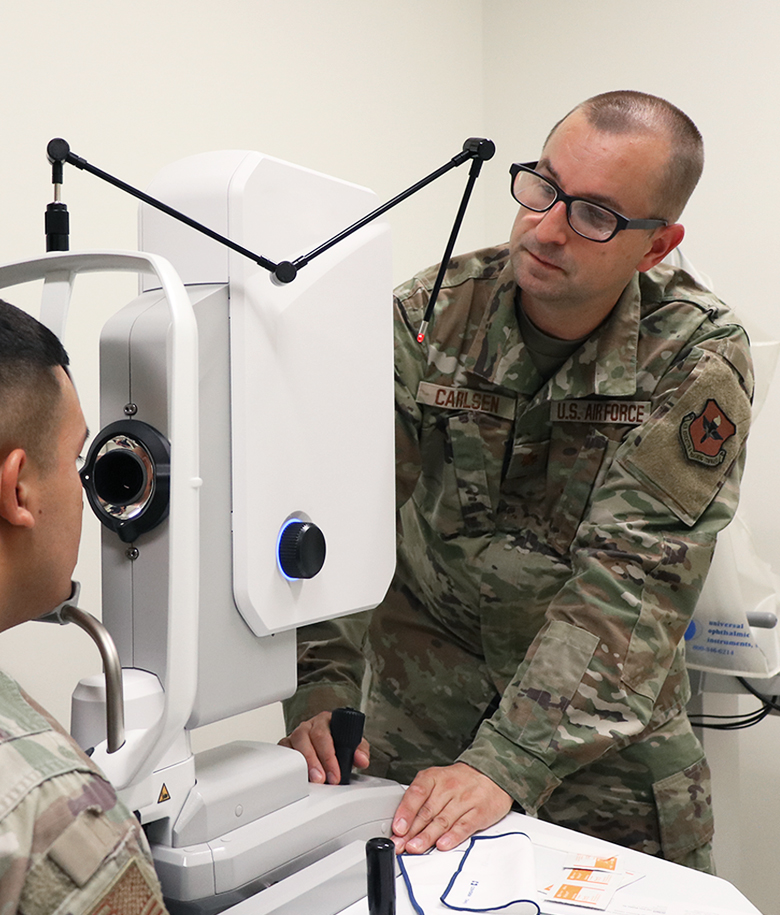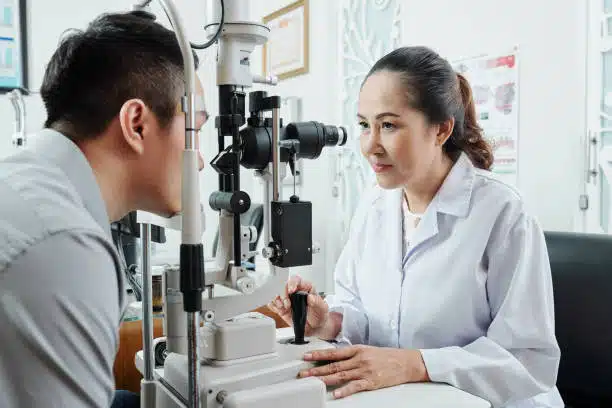Checking Out the current Technological Improvements in Optometry and What They Mean for Eye Doctors
From the precision of Optical Comprehensibility Tomography to the nuanced insights provided by AI-driven analysis devices, these technologies are establishing brand-new standards in client analysis and therapy. As these developments penetrate the technique, eye doctors are faced with the obstacle of accepting these devices to boost client end results.
Innovations in Diagnostic Tools
Advancing the field of optometry, developments in diagnostic devices have actually revolutionized the way eye care specialists analyze and diagnose visual impairments and eye problems. The past decade has actually experienced substantial technical improvements, making it possible for even more detailed and accurate evaluations.
Another key technology is the introduction of innovative corneal topography systems, which map the surface curvature of the cornea with accuracy. These devices are particularly advantageous for suitable call lenses and identifying corneal problems. Additionally, electronic retinal imaging has changed typical ophthalmoscopy, using thorough, scenic sights of the retina that facilitate complete aesthetic exams.
The development of wavefront aberrometry has actually additionally been essential, allowing the analysis of refractive mistakes with unparalleled precision (Optometrist Chino). This technology assists in personalizing rehabilitative lenses and enhancing medical end results for refractive surgeries. Collectively, these diagnostic improvements encourage eye doctors to deliver premium patient care, ensuring very early intervention and customized therapy strategies, ultimately boosting aesthetic health results
AI in Person Management
Building on the structure of cutting-edge diagnostic tools, the unification of fabricated knowledge (AI) in client monitoring represents a transformative leap for optometry. AI systems are significantly utilized to improve effectiveness, precision, and customization in individual care.
Moreover, AI-driven systems assist in structured person interactions and administrative processes. Automated organizing, virtual assessments, and customized follow-up strategies not only improve individual contentment but also maximize time monitoring for professionals. These systems can triage individuals based upon the seriousness of their conditions, making certain that those in critical need obtain timely attention.
Additionally, AI enhances decision-making by giving optometrists with evidence-based recommendations and treatment pathways. By incorporating data from electronic health and wellness records, AI tools provide understandings that notify medical decisions, minimizing the danger of mistakes and boosting individual outcomes. As AI continues to advance, its role in individual administration will likely expand, improving the landscape of optometric care.
Breakthroughs in Retinal Imaging
In the world of optometry, retinal imaging has seen impressive technological developments that are enhancing analysis capacities and patient care. Technologies such as Optical Comprehensibility Tomography (OCT) and fundus digital photography have revolutionized how optometrists assess the retina and visualize.
Improved imaging techniques like OCT angiography are additional refining diagnostic accuracy. This non-invasive method maps blood flow in the retina, supplying important understandings into vascular health and wellness without the need for color injections. In addition, adaptive optics innovation is being integrated right into retinal imaging systems to correct eye aberrations, providing unprecedented picture clarity. Such improvements facilitate the identification of min retinal changes that can indicate disease progression.
Moreover, advancements in man-made intelligence are enhancing retinal imaging by enabling automatic evaluation of large datasets. These systems help optometrists in identifying patterns indicative of pathology, thereby enhancing diagnostic accuracy and efficiency. Jointly, these advancements are changing retinal imaging into a foundation of modern-day eye treatment, enhancing end results and broadening restorative opportunities.
Teleoptometry's Expanding Role
Teleoptometry is progressively becoming an important part of eye care, driven by improvements in digital interaction and diagnostic tools. This is especially advantageous in country and underserved locations Our site where accessibility to specialized eye care is frequently minimal.
The assimilation of expert system (AI) further enhances teleoptometry, making it possible for the analysis of aesthetic information and assisting in the discovery of ocular problems such as glaucoma and diabetic person retinopathy. AI-powered formulas can quickly analyze complex imaging information, offering eye doctors with important understandings that bolster scientific decision-making.
In addition, teleoptometry supports connection of care through smooth integration with digital health and wellness documents (EHRs), enabling optometrists to maintain comprehensive patient backgrounds. When seeking advice from with different specialists., this makes sure that patients receive consistent and personalized treatment also.
Regardless of these benefits, difficulties continue to be, consisting of making certain information safety and security and managing patient expectations. Teleoptometry represents a significant stride towards even more easily accessible, effective, and patient-centered eye treatment. As innovation progresses, its role is poised to increase further.

Future Patterns in Eye Care
A myriad of cutting-edge fads is set to improve the future of eye care, driven by technological advancements and the progressing demands of people. One substantial trend is the combination of artificial intelligence (AI) in diagnostics, which guarantees to enhance the accuracy and effectiveness of eye exams. AI algorithms can evaluate large quantities of information from retinal photos, potentially detecting conditions like diabetic retinopathy and glaucoma earlier than traditional techniques.
Furthermore, personalized medication is obtaining traction in optometry, with genetic screening informing personalized therapy plans. This method intends to enhance her latest blog patient end results by customizing interventions to specific hereditary profiles. Wearable technology, such as smart call lenses, is likewise coming up, offering real-time monitoring of intraocular pressure or glucose degrees, hence supplying continual insights into systemic and eye health and wellness.
The adoption of increased truth (AR) and virtual reality (VIRTUAL REALITY) in training and client education and learning is one more emerging fad. These innovations offer immersive experiences that can boost understanding and skills both for optometrists and people. As these patterns develop, optometrists need to remain abreast of technological advancements to give sophisticated treatment, making certain improved client outcomes and fulfillment in the dynamic landscape of eye treatment.
Verdict

Collectively, these analysis improvements encourage optometrists to supply visit the website premium client care, making sure very early intervention and tailored therapy methods, ultimately improving visual wellness results.

As these modern technologies continue to progress, optometrists need to adapt and integrate them into method, inevitably enhancing workflow efficiency and boosting the criterion of eye care supplied to people.